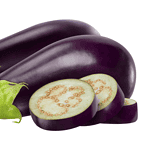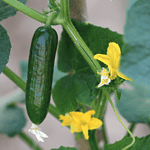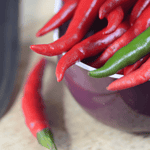Discover the optimal temperature range for growing green beans and achieving healthy and vigorous plants. Learn the temperature requirements for germination, emergence, and maturity of green bean plants.
Green beans, also known as snap beans, are one of the most popular warm-season crops grown in home gardens. Whether you prefer pole beans, bush beans, or a combination of both, green beans are easy to grow and produce a bountiful harvest.
However, to achieve optimal yields, it’s crucial to pay attention to the temperature requirements for green bean plants. In this article, we’ll explore the ideal temperature range for growing green beans from seed germination to plant maturity.
We’ll also provide tips and tricks for ensuring your green beans thrive in their growing conditions.
Temperature Requirements for Green Bean Plants:
Green beans require specific temperature ranges for different stages of growth. Here’s a breakdown of the ideal temperature range for growing green beans:
- Germination Temperature: After the danger of frost has passed, green bean seeds need an average soil temperature of at least 60°F to germinate. If the soil temperature is lower than this, germination will be slow, and the seeds may not sprout at all [[1]].
- Emergence Temperature: Once the seeds have sprouted, the temperature should warm up to 77°F for optimal growth. The minimal soil temperature for green bean seeds is 48°F, and anything lower than this can result in slow growth [[2]].
- Maturity Temperature: When the green bean plants reach maturity, they require warm temperatures of around 70-80°F during the day and slightly cooler temperatures of around 60-70°F at night. High temperatures can lead to poor yields, while low temperatures can cause flower drop and delayed maturity.
Tips for Growing Green Beans in Optimal Temperature:

Here are some tips for growing green beans in the optimal temperature range:
- Choose the right variety: Some green bean varieties are better adapted to cooler temperatures, while others prefer warmer temperatures. Check the seed packet or consult a gardening expert for recommendations on the best green bean variety for your climate.
- Time your planting: Wait until the soil temperature is consistently above 60°F before planting green beans. Planting too early can result in poor germination rates and slow growth.
- Provide shade: In hot climates, provide partial shade to protect the plants from excessive heat. You can use shade cloth or plant taller crops to create shade.
- Water regularly: Green beans require regular watering to thrive. Water the plants deeply once or twice a week, depending on the weather conditions.
- Use a trellis: If you’re planting pole beans, use a trellis to support the plants and keep them off the ground. This will improve air circulation, reduce disease pressure, and maximize yield [[2]].
FAQs
Q: What happens if the soil temperature is too low for green bean seeds?
A: If the soil temperature drops below 48°F, green bean seeds may not germinate well, resulting in slow growth.
Q: Can I plant green beans in the fall?
A: Yes, you can plant green beans in the fall, but be aware that the first frost can damage or kill the plants.
Q: What is the best time of day to water green beans?
A: It’s best to water green beans in the morning, so the plants have time to dry out before the evening. Wet foliage at night can lead to fungal diseases.
Conclusion
The ideal temperature range for growing green beans is crucial for achieving healthy and vigorous plants. From seed germination to maturity, green beans require specific temperature ranges to grow successfully
Based on the provided search results, it is clear that the ideal temperature range is a critical factor for the successful growth of green beans. According to the University of Georgia Extension, the temperature range for growing green beans should be between 65°F (18°C) to 85°F (29°C) for healthy and vigorous plant growth [3].
For optimal seed germination, the soil temperature should be at least 55°F (12°C) and higher than 60°F for the seeds to germinate properly [2]. Planting in cooler soils is possible, but it will take longer for the seeds to germinate.
It is also important to note that green beans are a warm-season crop and should be planted after all danger of frost has passed [2]. Furthermore, the seeds should be sown about 1 inch deep and 3 inches apart. When plants are a few inches tall, thin them to at least 18 inches apart for bush varieties and 4 inches apart for pole varieties [1].
In conclusion, maintaining the appropriate temperature range is crucial for successful green bean growth. Proper seed germination and plant development are dependent on the specific temperature range, which should be between 65°F to 85°F for optimal growth.
It is important to keep in mind that green beans are a warm-season crop and should be planted after all danger of frost has passed while adhering to proper spacing requirements for each variety.
Latest Posts:
- How to Plant Lettuce Seeds for Maximum Germination

- How to Plant Kale Seeds: A Step-by-Step Guide to Maximum Germination Success!

- How to Plant Eggplant Seeds: A Step-by-Step Guide to Maximum Germination Success!

- How to Plant Cucumber Seeds for Maximum Germination

- How to Plant Chili Pepper Seeds for Maximum Germination

- How to Plant Cabbage Seeds for Maximum Germination





